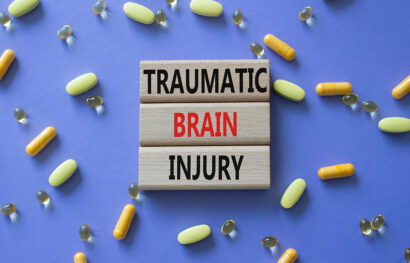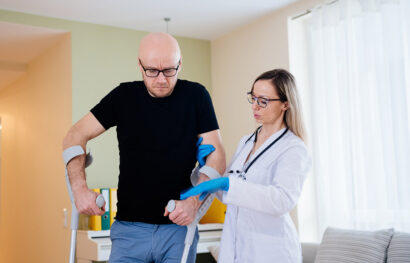 Have you been experiencing consistent lower back pain? Improper posture and overworking may be causing it. It might be a passing pain that disappears with some care. However, some underlying causes of lower back pain may require medical attention.
Have you been experiencing consistent lower back pain? Improper posture and overworking may be causing it. It might be a passing pain that disappears with some care. However, some underlying causes of lower back pain may require medical attention.
What are the underlying causes of lower back pain? Read on to learn more about them.
Scoliosis
Scoliosis is characterized by the C- or S-shaped sideways curvature of the spine, and its cause is often unknown. It mostly starts when children undergo their growth spurt during puberty. However, some adults also develop this condition. While some cases are mild, others worsen with time. As a result, space within the chest is reduced, affecting lung function.
Once diagnosed, the curvature is often observed to see if it becomes severe. Braces are prescribed to stop it from worsening. Some severe cases require surgery to straighten the curvature of the spine.
Sprains
Sprains occur when you stretch a ligament beyond its normal range. It may also happen after a fall or sudden, severe movement. Accidents caused by physical activities like playing sports or exercising may also put you at risk for lower back sprains. Lower back pain from this condition can be mild or severe, but immediate medical attention is required to make sure that no other complications accompany the sprain.
Rest, ice, and compression are the first-aid treatments to sprains. Over-the-counter non-steroidal anti-inflammatory drugs (NSAIDs) can help reduce pain and inflammation. Oftentimes, sprains get better within two weeks of conservative treatment.
Arthritis
Arthritis may also cause lower back pain. This condition refers to a group of over 100 musculoskeletal disorders that cause swelling of joints. The most common types that may affect your back are:
- This condition is the most common type of arthritis of the spine. It is due to the normal wear and tear of the joint’s cartilage due to aging.
- Rheumatoid Arthritis. This type of arthritis occurs because your body’s immune system abnormally attacks the lining of your joints, causing pain, inflammation, and swelling.
These conditions require continuous management to alleviate symptoms and improve the quality of your life.
Spinal Stenosis
Spinal stenosis occurs due to narrowing space in the spine, causing pressure on the spinal cord or the nerve roots. It is typically caused by aging, but some people may be born with this disease. This condition commonly affects the neck (cervical stenosis) or the lower back (lumbar stenosis).
Some people may experience no symptoms with their condition; others may start with mild signs that worsen over time. The signs and symptoms of spinal stenosis include:
- Numbness of the foot or leg
- Weakness in the foot or leg
- Lower back pain
- Leg cramping when standing or walking
Herniated Disc
A herniated disc, also referred to as lumbar disc disease, occurs when the nucleus, the jellylike center of your spinal disc, pushes through a tear along the annulus – the rubbery exterior of the spinal disc. When this condition develops, nearby nerves become irritated, resulting in arm or leg pain and numbness. It may also cause intermittent back pain that worsens when you move.
Often, rest, physical therapy, medicine, and back support alleviate a herniated disc’s symptoms. However, surgery may be necessary if symptoms do not improve with these measures.
Osteoporosis
Osteoporosis is a silent disease that causes bones to become weak and brittle. It occurs because the body’s bone production cannot keep up with the bone loss. While this condition can affect anyone, white and Asian women past menopause age are at the highest risk.
Often, the early stages of osteoporosis have no symptoms. As your bones become weaker, these signs may appear:
- Back pain
- Loss of height
- Stooped posture
- Bone fracture caused by mild stresses like bending and coughing
It is necessary to speak with your doctor about this condition if you have early menopause or if your parents have this condition, too.
Kidney Stones
Not all causes of lower back pain are related to the spine. Kidney stones, which are hardened mineral and salt deposits inside the kidneys, may also cause lower back pain. Other symptoms of this painful condition are:
- Burning sensation when urinating
- Pink, red, or brown urine
- Frequent urination
- Nausea
- Fever if an infection is present
These symptoms do not occur until the stones move within or out of the kidneys. Seek immediate medical assistance if you notice these signs.
Lower Back Pain Treatment in Blue Springs, MO
There are a lot of medical problems that can cause lower back pain. Some of them can improve with conservative measures. Others require immediate medical assistance to avoid further complications. Our licensed providers at Core Medical Center can help diagnose and treat the cause of your lower back pain. We are highly skilled in advanced treatment techniques in dealing with neurological, skeletal, and soft tissue injuries.
Our clinic, in Blue Springs, Missouri, is ready to serve you. You may reach us at (816) 427-0201 for questions about our services. Alternatively, you may use our secure appointment request portal for your convenience. Let us help you make the pain go away!




